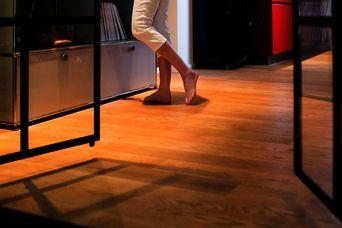Regular treatment of wooden floors with parquet oil
If you want something to maintain a consistently high quality over a long period of time, you must invest some care. This not only applies to your beloved car, but also to your parquet floor. With the right care, it can easily “survive” several generations. To ensure that future generations can enjoy the natural patina associated with loving ownership, the wooden floorboards should be re-oiled at regular intervals depending on the wear and tear. Please continue reading for a few practical tips.
1. Oiling is better than sealing
Compared to sealing, the advantage of oil treatment is that the wood can breathe – as intended by nature. When oiling the parquet instead of sealing it, individual floor areas that have been more affected by wear and tear can later be sanded and re-oiled. The purpose of sanding is to open the wood pores and enable them to absorb the oil. Before applying the oil, however, the parquet must be thoroughly freed from dust. If there are joints between the boards, these must be repaired before oiling.
2. Proper oil application and drying time
Similar to waxing a car, also the oiling of parquet must be done properly. For this purpose, the parquet oil is applied like a lotion until the wood is saturated and no longer absorbs any oil. About 30 minutes after the last application, excess oil on the parquet is wiped up with a cloth, which is afterwards placed into a water-filled bucket to reduce the risk of self-ignition. After 24 hours, the floor can be walked on but without shoes. Before all furniture is put back into place, the parquet should be left to dry for another two weeks.
3. EMICODE®-labelled parquet oil is particularly low in emissions
To ensure that not only the wood fibers but also the residents breathe easily and are unaffected by possible emissions, it is advisable to use environmentally friendly and solvent-free parquet oils. Here, the EMICODE® eco label provides useful guidance. Only harmless products with low emission levels are allowed to carry the high-quality EC1 or EC1 PLUS seal. This ensures that the highest health and environment requirements are fulfilled.

©GEV
Share article on Social Media:
